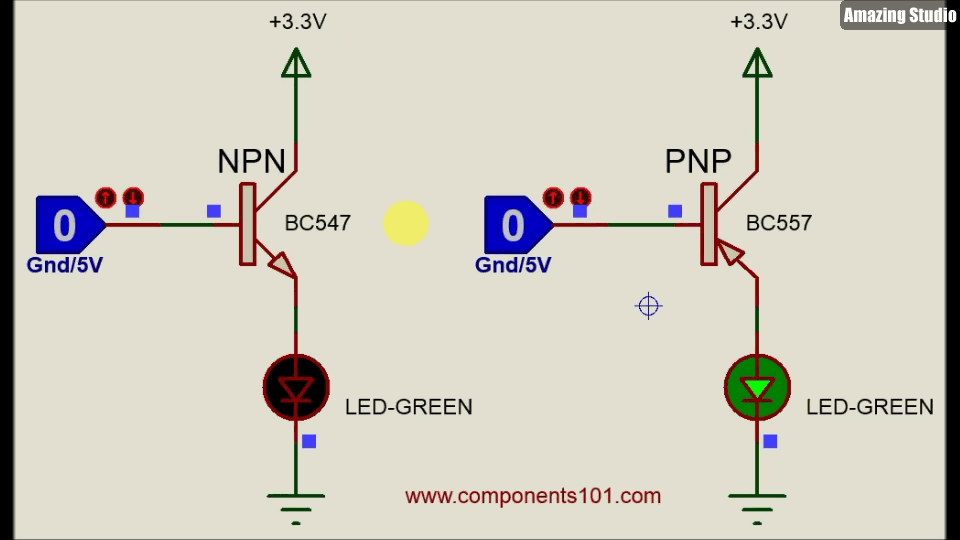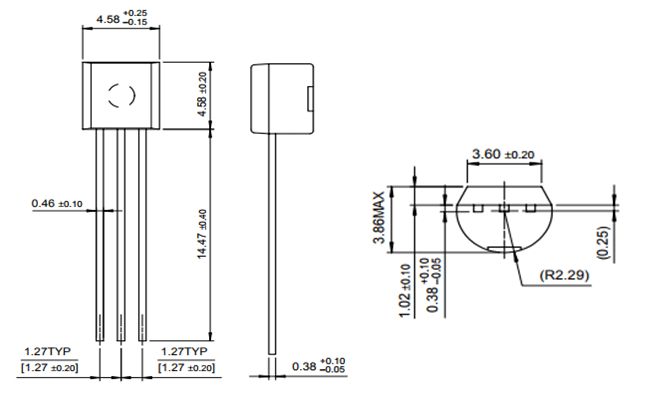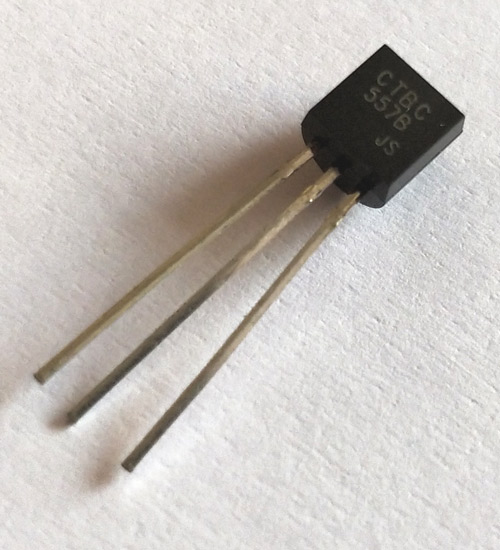BC557 PNP Transistor
The BC557 is a versatile PNP bipolar junction transistor widely used in electronic circuits. With its low noise and high current gain, it's ideal for applications requiring amplification, switching, or voltage regulation. If you are a complete beginner with BJTs you can check out this article on the Basics of BJT and How to use them, to get a complete understanding, now let's look more into the BC547 Transistor.
BC557 Pin Configuration
|
Pin Number |
Pin Name |
Description |
|
1 |
Collector |
Current flows in through collector |
|
2 |
Base |
Controls the biasing of transistor |
|
3 |
Emitter |
Current Drains out through emitter |
Features
- Bi-Polar PNP Transistor
- DC Current Gain (hFE) is 300 maximum
- Continuous Collector current (IC) is 100mA
- Emitter Base Voltage (VBE) is 6V
- Base Current(IB) is 5mA maximum
- Available in To-92 Package
Note: Complete Technical Details can be found at the BC557 datasheet given at the end of this page.
BC557 Transistors Equivalents
Here are some of the transistors that can be used as BC557 transistor replacements: BC157, BC558, 2N3906, 2SA1943, BD140, S8550, TIP127, TIP42
If you are looking for an SMD variant you can check out BC867
Brief Description on BC557 Transistor
BC557 is a PNP transistor hence the collector and emitter will be closed (Forward biased) when the base pin is held at ground and will be opened (Reverse biased) when a signal is provided to base pin. This is where a PNP transistor differs from a NPN transistor, a Logic state (blue colour) is used to toggle between Ground and Signal Voltage (Emitter-Base Voltage VBE) as shown below

BC557 has a gain value of 110 to 800, this value determines the amplification capacity of the transistor. The maximum amount of current that could flow through the Collector pin is 100mA, hence we cannot connect loads that consume more than 100mA using this transistor. To bias a transistor, we have to supply current to base pin, this current (IB) should be limited to 5mA.
When this transistor is fully biased then it can allow a maximum of 100mA to flow across the collector and emitter. This stage is called Saturation Region and the typical voltage allowed across the Collector-Emitter (VCE) or Base-Emitter (VBE) could be 200 and 900 mV respectively. When base current is removed the transistor becomes fully off, this stage is called as the Cut-off Region and the Base Emitter voltage could be around 660 mV.
BC557 Transistor Uses
As you know a transistor can be used in various applications. The two major use cases for the BC 557 transistor are as a switch or as an amplifier just like any other BJT transistor.
BC557 Transistor as switch
When a transistor is used as a switch it is operated in the Saturation and Cut-Off Region as explained above. As discussed a transistor will act as an Open switch during Forward Bias and as a Closed switch during Reverse Bias, this biasing can be achieved by supplying the required amount of current to the base pin. As mentioned the biasing current should maximum of 5mA. Anything more than 5mA will kill the Transistor; hence a resistor is always added in series with base pin. The value of this resistor (RB) can be calculated using below formulae.
RB = VBE / IB
Where, the value of VBE should be 5V for BC557 and the Base current (IB depends on the Collector current (IC). The value of IB should not exceed mA.
BC557 Transistor as Amplifier
A Transistor acts as an Amplifier when operating in Active Region. It can amplify power, voltage and current at different configurations.
Some of the configurations used in amplifier circuits are
- Common emitter amplifier
- Common collector amplifier
- Common base amplifier
Of the above types common emitter type is the popular and mostly used configuration. When uses as an Amplifier the DC current gain of the Transistor can be calculated by using the below formulae
DC Current Gain = Collector Current (IC) / Base Current (IB)
Difference between BC557A , BC557B and BC557C
The major difference between these variants is that they offer different gain(hfe). While the BC557A variant offers the lowest gain of 110 to 200, the BC557B offers a gain of 200-450 and the BC557C gives the highest gain of 450-800.
Applications
- Driver Modules like Relay Driver, LED driver etc..
- Amplifier modules like Audio amplifiers, signal Amplifier etc..
- Darlington pair
2D Model and Dimensions
If you are designing a PCD or Perf board with this component, then the following picture from the BC557 Datasheet will be useful to know its package type and dimensions.












